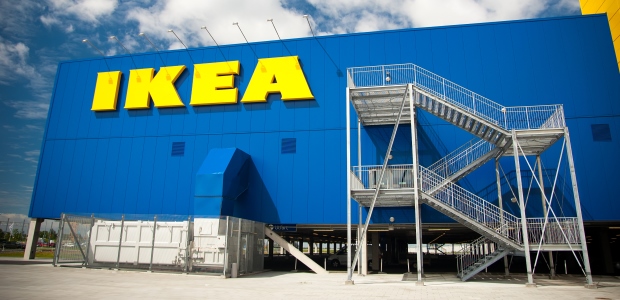
Striving for Sustainability: Commercial Properties Go Green
As people and corporations alike are becoming more environmentally conscious with each passing year, businesses around the globe are finding ways their stores can leave less of a carbon footprint.
- By Lindsay Page
- Feb 05, 2014
Over the past few years, LEED certification has become a hot topic, especially when large buildings, such as the Empire State Building or the George W. Bush Presidential Center, announce LEED achievements. With eco-accomplishments such as these, other businesses around the world are seeking ways to become more environmentally friendly. Boosting efficiency, offering more approachable ways to recycle, and using renewable energy are just a few ways commercial properties are going green
With 2014 barely here, several large corporations are already working on their sustainability goals. IKEA, a home furnishings retailer, announced that they have expanded a solar energy system to help power one of their stores near Denver, Colo. Upon completion of the install, the system will generate enough energy––equivalent to reducing 1,200 tons of carbon dioxide emissions–– to power the store.
“We are fortunate to have the roof space and corporate commitment to more than double the energy being generated on-site here at the store,” said John Ellis, manager of the Colorado store. “We are proud to make this investment and to grow our local sustainable footprint.”
Last year, IKEA had solar energy systems installed on 90 percent of their stores in the United States.
And, only a few weeks ago, The Coca-Cola Company reported that the company had installed its one millionth hydrofluorocarbon (HFC)-free cooler that uses a natural refrigerant. This will reduce carbon dioxide emissions by 5.25 million tons over a 10 year period. This achievement marks another success as the company works toward its goal of completely eliminating the use of HFC refrigeration. Coca-Cola also switched to HFC-free insulation foam on their equipment.
"Over the past decade we have invested more than $100 million to make our coolers better for the environment," said Jeff Seabright, vice president, Environment & Water, The Coca-Cola Company. "And we have significantly reduced our overall carbon footprint. Through investment in research, development and commercialization efforts we’ve advanced the use of more energy-efficient, HFC-free cooling technologies and energy management systems. We’ve made sustainable refrigeration the cornerstone of our climate protection and energy management efforts."
In a Grocery Headquarters article, the grocery industry is working on becoming energy efficient, too. Grocers, such as Walgreens, are striving to achieve this goal because “they can make a significant impact to the triple bottom line when they embrace energy retrofits for lighting, HVAC and refrigeration equipment. It is equally important to reduce heat-island effect by incorporating white roofs and shade trees, purchase sustainable materials, implement green operating procedures and reduce storm water runoff using pervious pavers.”
These are only a few examples of businesses attempting to reduce their carbon footprint. Now that customers and clients are more aware of a company’s sustainability goals, it gives company owners a stronger push in the right direction. To read more about LEED certified buildings, including schools, hospitals, and more, please click here.